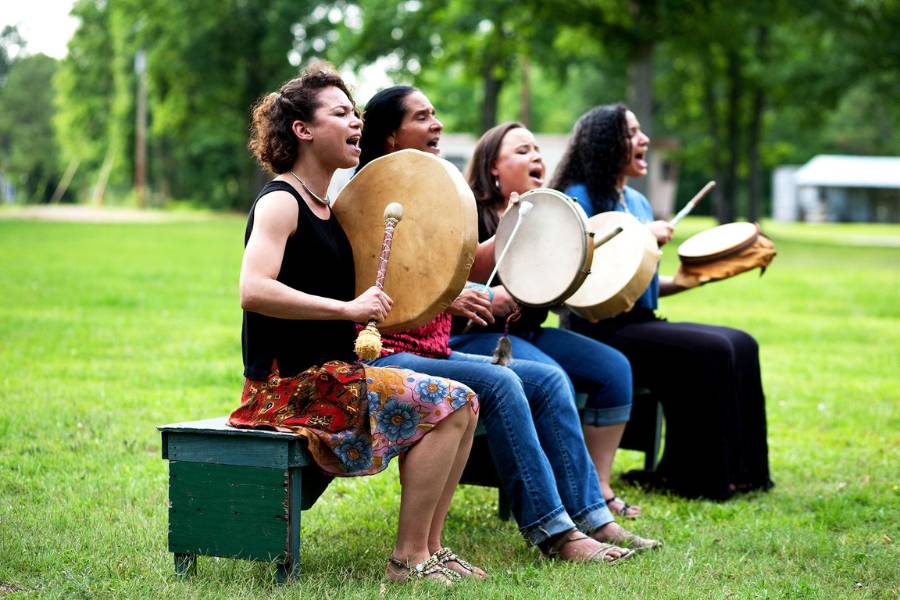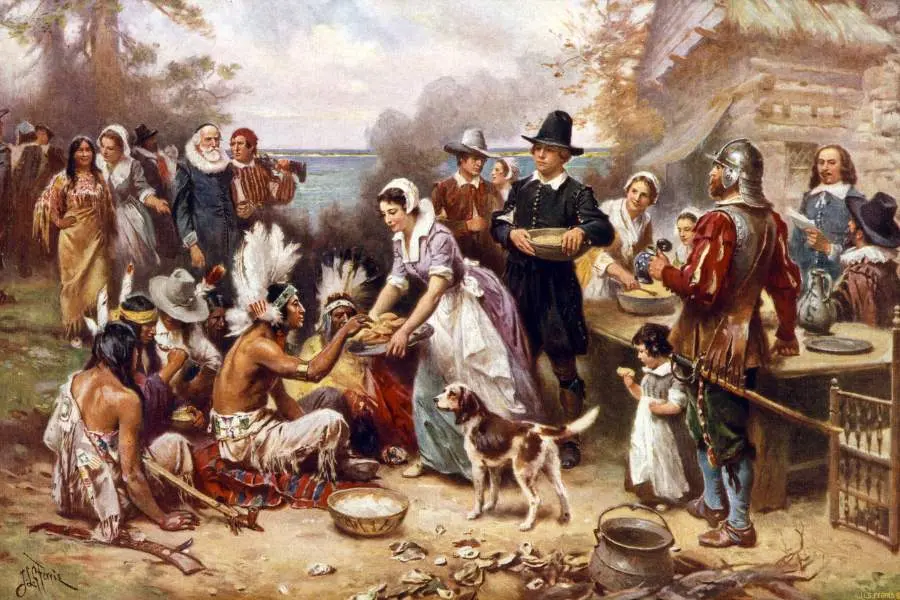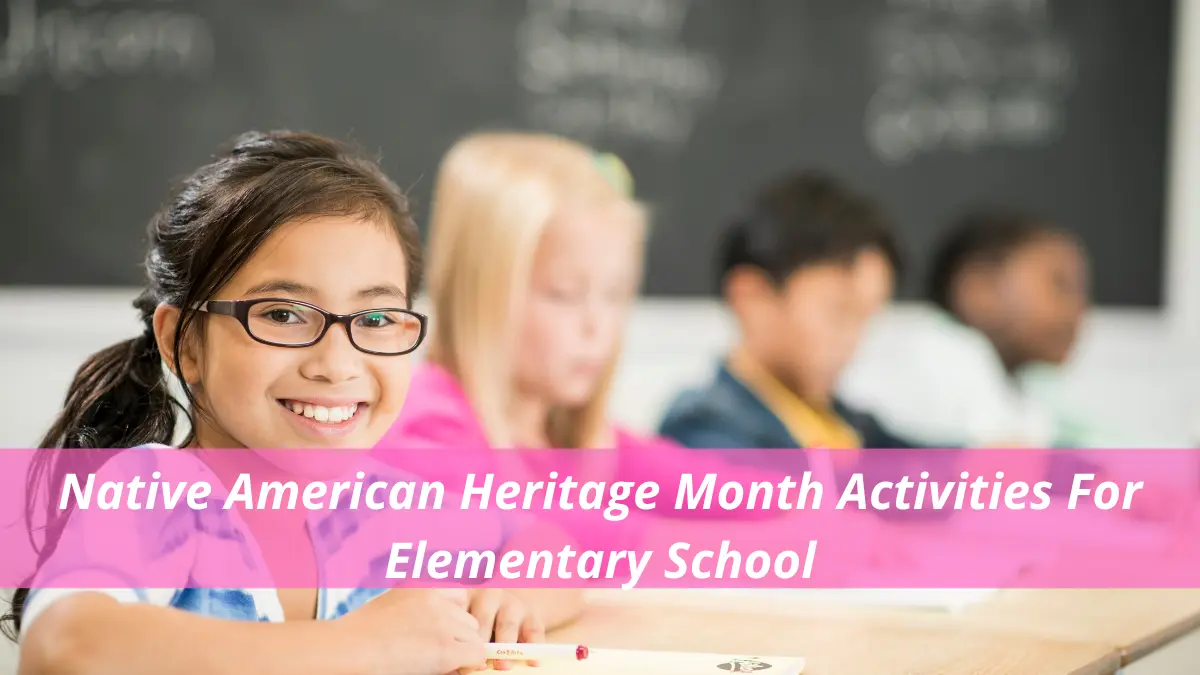Gain a deeper understanding and appreciation of Native American customs, beliefs, and ancestral roots while celebrating the richness of Native American heritage.
Engage elementary students in activities that explore diverse cultures, traditions, and history, allowing them to immerse themselves in the vibrant and captivating aspects of this culture.
Table of Contents
Evolutionary Journey of Native American Heritage Month
The roots of Native American Heritage Month can be traced back to the early 20th century when Native Americans were first recognized as citizens of the United States.
The month was initially proposed by Dr. Arthur C. Parker, a Seneca Indian who served as the New York State Archaeologist and Director of the Rochester Museum & Science Center from 1913 to 1915. Dr. Parker suggested setting aside November to celebrate and honor Native American culture while promoting the history and contributions of Native Americans to society.
In 1990, President George H. W. Bush signed Public Law 101-343, officially designating November as Native American Heritage Month. The law went into effect on August 3rd of that year. Since then, there has been an increased awareness and recognition of Indigenous peoples each year.
This celebration aims to pass down the remarkable events and sacrifices of the ancestors to the next generation, educating people about their rich heritage and celebrating it with pride.
Impact of Acknowledging Native American Heritage Month for Students
Celebrating Native American Heritage Month holds great importance for elementary students as it provides them with a valuable opportunity to learn about the rich culture of Native American communities and to recognize and honor their diverse traditions.
By engaging in activities related to Native American heritage, students can gain valuable insight into the languages, art, and beliefs that have shaped their country. This celebration promotes cultural sensitivity, empathy, and respect among students, empowering them to challenge stereotypes, correct misconceptions, and promote accurate portrayals of Native American cultures.
Through educational activities and meaningful discussions, students have the opportunity to develop a more comprehensive and respectful perspective, contributing to the fostering of an inclusive society.
Native American Heritage Month Activities for Elementary Students
In this article, we will share some activity ideas, lesson plans, and books suitable for elementary students during Native American Heritage Month. By exploring these resources, you can make your Native American Heritage Month more interesting and engaging for students.
1. Listen to Native American Music

Explore Native American Music Connect with Rich Cultural Heritage. Captivating melodies and rhythms bring nature and spirituality to life. Discover traditions, and stories, and inspire respect for indigenous tribes. Introduce your students to the beautiful world of Native American music.
2. Learn About Thought Changer Native American Personalities
Celebrate Native American Heritage Inspiring Individuals and Their Impact. Discover role models who shaped Native American culture. Learn about leadership, courage, and perseverance. Engage in storytelling, art projects, and role-playing. Appreciate the diverse talents and legacies. Honor Thought Changer personalities this Native American Heritage Month.
3. Arrange a Debate on Historical and Current Events
Engaging Native American Debates Exploring History and Current Issues. Empower elementary students to express opinions and research. Discuss cultural preservation, land rights, and representation. Develop critical thinking and empathy. Foster understanding of indigenous challenges. Raise awareness this Native American Heritage Month.
4. Native American Tribes

Diverse Native American Tribes Celebrating Rich Cultures. Explore unique traditions, languages, and customs. Discover tribes like Cherokee, Navajo, Apache, Sioux, and Iroquois. Learn about their way of life and heritage. Celebrate Native American Heritage Month with students.
5. Native American Legends and Myths
Exploring Native American Legends Wisdom and Creativity. Discover fascinating tales with cultural and spiritual significance. Dive into the values, beliefs, and traditions of tribes. Engage in discussions, artwork, and skits. Foster creativity and cultural understanding. Unveil the wisdom of Native American communities during Heritage Month.
6. American Powwow

Experience the Spirit Native American Powwows Unveiled. Discover the vibrant traditions of powwows during Heritage Month. Immerse in colorful dances, music, and regalia. Engage students with a simulated classroom powwow. Create dance steps and simple regalia for an immersive hands-on experience. Embrace Native American culture and preserve traditions.
7. Native American Contribution Analysis
Celebrating Native Contributions Discovering Heritage Month’s Impact. Uncover Native Americans’ significant contributions during this month. Explore crop cultivation, staple foods, and advancements in medicine. Delve into the origins of lacrosse and its influence on modern sports. Appreciate the rich heritage and enduring influence of Native Americans.
8. Petroglyph Rock Art
Teach students about petroglyphs. These petroglyphs should be ancient rock carvings created by Native American tribes. Provide students with clay or playdough. Let them be free to create their own petroglyph designs on flat surfaces. They can use tools or their fingers to carve symbols and patterns. They also can represent animals, nature, or significant events with their creations.
9. Traditional Pottery

Explore the art of pottery in Native American cultures. Show students examples of traditional Native American pottery and discuss its significance. Provide air-dry clay or playdough for students to sculpt their own pottery pieces. They can draw bowls, vases, or animal-shaped figurines. After that, they will paint and decorate their creations. This décor can be made attractive using symbols and patterns inspired by Native American designs.
10. Storytelling Masks
Introduce students to Native American storytelling traditions through mask-making. Provide them with paper plates or cardboard cutouts in the shape of masks. You can give them art supplies like paints, markers, and feathers for more ease. Students can decorate their masks to represent different characters from Native American legends. They also can display their own imaginative story characters with these masks.
11. Nature-inspired Paintings
Encourage students to explore the beauty of nature through art. Provide them with watercolors or acrylic paints. After that, ask them to create paintings inspired by Native American landscapes. They can depict scenes such as mountains, forests, rivers, and more. Using vibrant colors and blending techniques can give a great charm to their paintings.
12. Feather Art Collage
Discuss the importance of feathers in Native American cultures. Symbolize them with spirituality and their connection to the natural world. Ask students to gather various colored feathers. You can suggest they create their own feather shapes using colored paper. Provide a canvas or thick paper and have students arrange and glue the feathers to create a unique collage. They can also add other elements like beads or leaves.
5 Frequently Asked Questions About Native American Heritage Month
Here are Some FAQs About Native American Heritage Month. This section may help you to find your queries about this traditional month’s activity.
Why is November the Native American Month?
Native American Heritage Month is observed in November. It coincides with significant historical events for indigenous people. It may honor Thanksgiving and the arrival of European settlers. However, it later on became the United States. This month holds significance in recognizing and celebrating the experiences and contributions of Native Americans.
When was the first Native American Heritage Month?
In 1990, a resolution was signed by President George H.W. Bush. It was passed to create “National American Indian Heritage Month” in November. This month is now referred to as Native American Heritage Month.
What Is Native American Heritage Month?
“Native American Heritage Month celebrates rich and diverse cultures, traditions, and histories. This Heritage Month is an opportune time to educate the general public about tribes. It raises general awareness about the unique challenges of Native people both historically and in the present. It also shows how tribal citizens have worked to conquer these challenges.”
How To Celebrate Native American Heritage Month?
Here are some ways to celebrate Native American Heritage Month:
- Discover the true history of Native Americans and Indigenous Peoples in America.
- Have discussions with children about the real story behind the first Thanksgiving.
- Explore books and resources highlighting contemporary Native Americans, not just historical figures.
- Help children understand the diverse Native tribes and cultures that exist.
- Watch videos that showcase traditional Native storytelling.
- Learn about and try authentic Native food and recipes.
- Engage in respectful native crafts, avoiding inappropriate items like Native headdresses.
- Attend or organize a Native educational event.
- Look for books featuring Native American characters and written by Native American authors.
- Support local or online businesses owned by Native Americans.
Which is correct Native American or American Indian?
To honor the culture correctly, do you say Native American or American Indian? Native American, American Indians and Indigenous Peoples are all used within the community. Many prefer their tribal affiliation like Lakota people, Sioux, etc. to generalized terms. But some Native Americans prefer one term over the other, so if you are unsure, just ask!
Conclusion
In conclusion, Native American Heritage Month provides a valuable opportunity for elementary students. It let them learn and appreciate the rich history, cultures, and contributions of Native American people. Through engaging in such activities, students can develop a deeper understanding and respect for it.
These activities foster cultural appreciation, empathy, and a broader worldview. It also nurtures a sense of inclusivity and respect for diverse cultures. Elementary students can cultivate a lifelong appreciation and their enduring significance.

